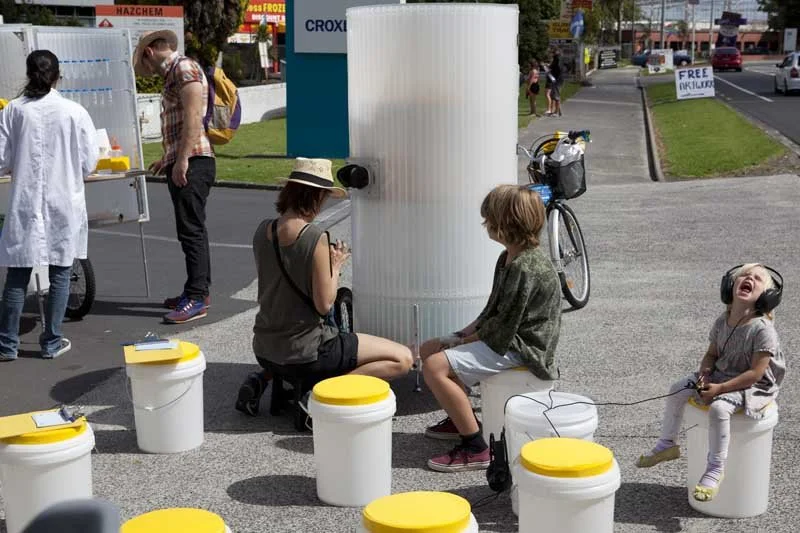Fluid City is a mobile architecture - three strange, translucent cupboard-like vessels each towed along the streets by bicycle. Visually and materially strange, poised between the utilitarian and the extraordinary, temporally occupying and disrupting the city, it borrowed its curious operations from the itinerant circus sideshow.
Each cupboard, with its yellow-aproned attendant, invites the passer-by into a tapestry of water stories—to press against the rubber lip of a diver’s mask and view the passage of water through the city; to don a lab coat and peer into the usually invisible microbial and biotic universe of the city’s waterways; to sit on an upturned bucket and listen to different voices sharing stories and knowledge of the city’s fluid states; to write on a card your own water story and peg it up to gently flap on a washing line strung across city space. Then, with the contents neatly packed away, Fluid City, like a puddle in the sun, disappears.
Fluid City was an art–science collaboration that aimed to foster awareness and understanding of water issues in Tāmaki Makaurau Auckland. First launched for the United Nations World Water Day in March 2012, parts of Fluid City were later adapted for the Rosebank Project, where it was tuned to explore the particular health and ecology of the neighbouring Whau River. Fluid City has subsequently been used as part of an expanded science curriculum in an Auckland secondary school.
Fluid City was funded by a grant from the University of Auckland. Project members - Charlotte Šunde, Alys Longley, Carol Brown, Kathy Waghorn / HOOPLA, Clark Ehlers, Katie Fitzpatrick, Gary Brierley and Rose Martin.





